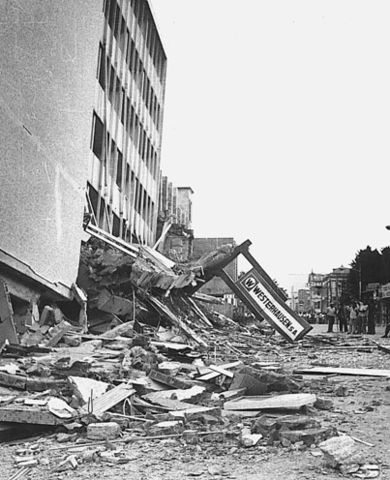Surviving an earthquake involves a combination of preparation, quick thinking, and adherence to safety guidelines. Here are earthquake survival tips for beginners:
Before an Earthquake:
- Create an Emergency Kit:
- Prepare a basic emergency kit with essentials such as water, non-perishable food, flashlight, batteries, first aid supplies, a multi-tool, and important documents.

- Prepare a basic emergency kit with essentials such as water, non-perishable food, flashlight, batteries, first aid supplies, a multi-tool, and important documents.
- Make a Family Emergency Plan:
- Develop a family emergency plan that includes evacuation routes, meeting points, and communication strategies. Ensure every family member is familiar with the plan.
- Secure Heavy Furniture:
- Secure heavy furniture, appliances, and other items that could topple during an earthquake. Use earthquake straps or anchors to secure large furniture to walls.
- Identify Safe Spaces:
- Identify safe spots in each room. These areas should be away from windows, mirrors, glass, and heavy furniture that could pose a threat during shaking.
- Know Your Home’s Weak Points:
- Be aware of potential hazards in your home, such as unreinforced masonry or poorly supported structures. Address these vulnerabilities if possible.
- Practice Drop, Cover, and Hold On:
- Learn and practice the “Drop, Cover, and Hold On” technique. Drop to the ground, take cover under a sturdy piece of furniture or against an interior wall, and hold on until the shaking stops.
During an Earthquake:
- Drop, Cover, and Hold On:
- If indoors, drop to the ground, take cover under furniture if available, and hold on. If outside, move to an open area away from buildings, streetlights, and utility wires.
- Stay Indoors:
- Stay indoors during the shaking. Going outside can expose you to falling debris and other hazards.
- Stay Away from Windows:
- Avoid standing near windows, glass, and mirrors that could shatter during the earthquake.
- If Driving, Pull Over:
- If you are driving, pull over to a safe location away from overpasses, bridges, and buildings. Remain inside the vehicle until the shaking stops.
After an Earthquake:
- Check for Injuries:
- Check yourself and others for injuries. Administer first aid as needed. Be cautious of broken glass and other hazards.
- Be Prepared for Aftershocks:
- Aftershocks often follow the main earthquake. Be prepared for additional shaking and take appropriate precautions.
- Listen to Emergency Updates:
- Listen to battery-powered or the best handheld cb radio collection for emergency updates. Follow instructions from local authorities.
- Evacuate if Necessary:
- If your home is unsafe or if authorities recommend evacuation, leave the premises and follow established evacuation routes.
- Beware of Hazards:
- Be cautious of hazards such as downed power lines, structural damage, and unstable objects. Avoid entering damaged buildings.
- Use Caution with Utilities:
- Be cautious with gas lines. If you smell gas, turn off the main gas valve, leave the building, and report it to the gas company. Use flashlights instead of candles to avoid the risk of fire.
- Contact Loved Ones:
- Let family and friends know that you are safe. Use text messages or social media if phone lines are overloaded.
- Document Damage:
- Take photos or videos of any damage to your property for insurance purposes.
Remember that earthquake preparedness is an ongoing process. Regularly review and update your emergency plans and supplies to ensure you and your family are well-prepared in the event of an earthquake.









